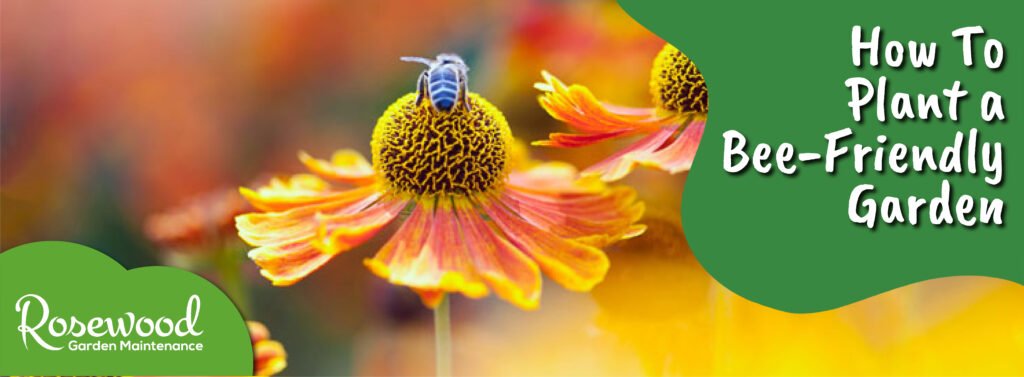
Gardens are our little patches of heaven where we like to relax at the end of the day and enjoy the best of what nature has to offer. But, there’s someone else that loves the garden just as much as we do. Bees, our trusted hard-working pollinators, are equally mesmerised by the colourful flowers in our gardens and their tasty stores of nectar and pollen. Let’s take a look at how we can plant a bee-friendly garden to further help our little buzzy friends!
Bees are in decline
Bees have been struggling for a while to find the food they need and, as a result, their numbers are in decline. A number of factors such as pesticides and habitat loss are to blame. Luckily, our gardens can provide the shelter and food needed to keep the bees doing their important work and bring life to our favourite crops.
Choose bee-friendly flowers
Lavender, bluebells and echinacea purpurea come with an array of amazing colours and will help create eye-catching pockets in your garden. Not only do they look great, but they are extremely attractive to all sorts of bees and pollinators. If you hadn’t already guessed by the flowers named above, then bees love the colour purple! Flowers with a purple-violet hue produce the highest volume of nectar, so nature is very clever when it comes to pollination.
Plant bee-friendly trees
If you’re lucky enough to have space in your garden for trees, many of them will have bees queuing up for their flowers. Pretty much any fruit tree is an ideal choice for pollinators, but apple and cherry trees are among some of their favourites. Not a bad choice when they’ll also provide you with an easy snack at arms reach!
Plant flowers that bloom at different times
Add flowers with different blooming schedules. Not only will this leave your garden looking its best all year round, but bees need to collect their nectar and pollen goodness all year long, why not give them an easy opportunity if it’s available?! A mix of early and late season flowers is one of the best tricks for planting a bee-friendly garden.

Avoid using pesticides in your bee-friendly garden
Pesticides are part of the reason that bees are in decline, so it makes sense that you should stop using them wherever possible. Pesticides are extremely toxic to bees and are likely to kill most of them. Instead, use smart gardening methods such as natural fertilisers that will keep your plants growing strong and able to fight off pest attacks on their own.
Create a bee hotel!
Building a bee hotel is a great way to boost bee diversity in your garden, by attracting solitary species. Solitary bees lay their eggs in the hollow cavities, leaving a small supply of food for the larvae to eat. The larvae then hatch, pupate and emerge from the stems.
Unlike actual hotels, they are not used for short overnight or week-long stays. Instead, they provide long-term accommodation where a bee lives from the time it is laid as an egg, until it is ready to emerge as a fully grown adult.
Relax the weeding
It’s easy to forget that many of the plants we consider weeds actually do a brilliant job at supporting wildlife. Lawn clovers and even dandelions will attract and provide pollen and nectar for bees. As well as relaxing on your weeding, you could leave certain areas of the garden completely undisturbed and let nature take its course.
Not only does creating a bee-friendly garden benefit nature, it also benefits us! it is becoming apparent that gardening is increasingly good for our mental health, so the more opportunities we get to be out in our gardens the better.











